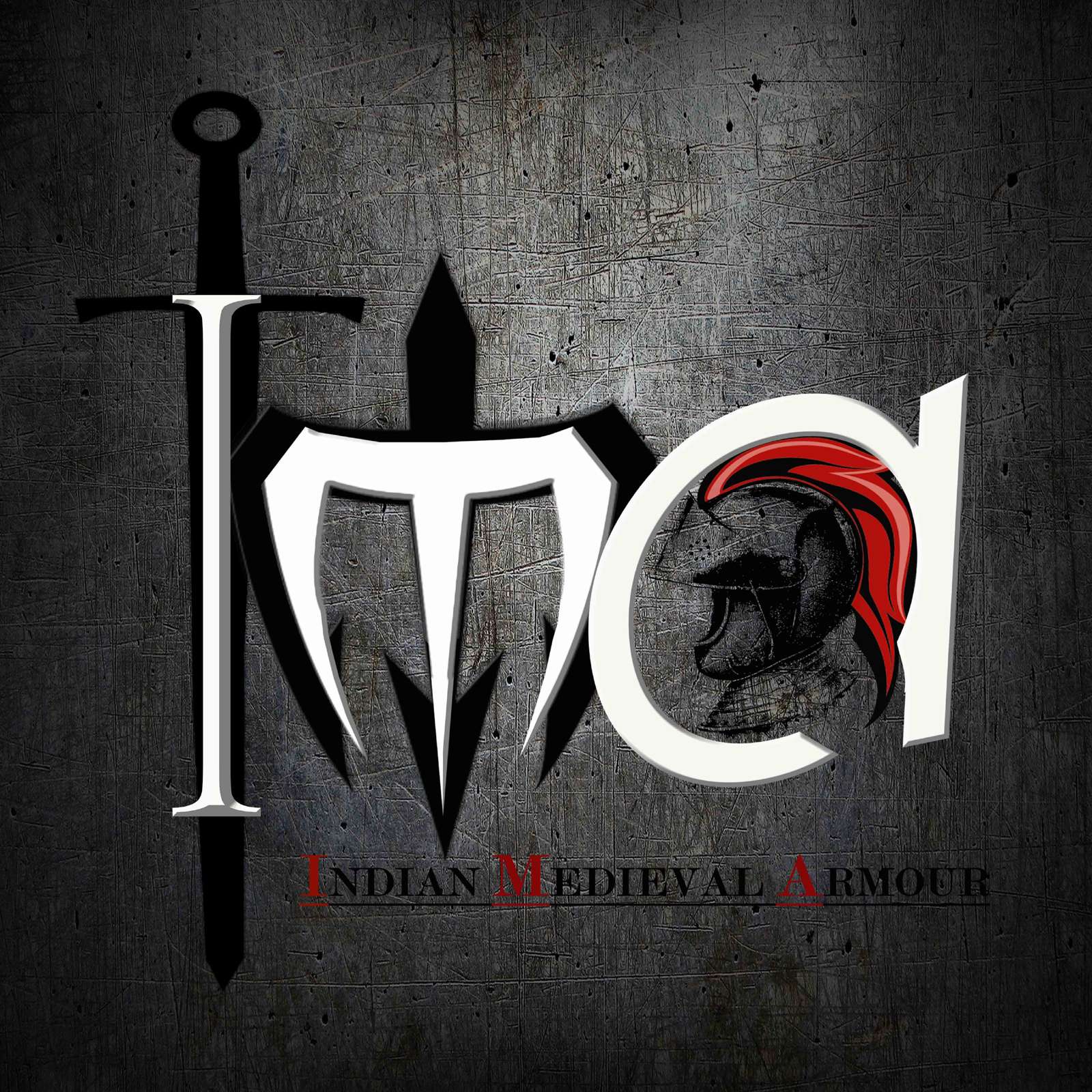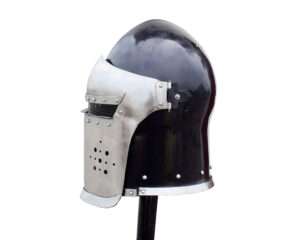Knight Helmets
“Embrace authenticity: For those who cherish the spirit of the past.”

About Us
"Excellence in every helm."



Popular Knight Helmets

The sallet helmet is a late medieval helmet characterized by its distinctive sloping design that covers the back of the head, ears, and neck. It typically features a T-shaped opening or visor for improved visibility and ventilation. The sallet was widely used by infantry and cavalry soldiers from the 15th century onward, offering a balance of protection and practicality on the battlefield.

The Burgonet helmet is a 16th-century helmet favored by cavalry soldiers. It features a distinctive crest or comb at the top, a curved brim extending over the neck, and often includes pivoting cheek guards for added protection. This helmet’s design provided both defense and flexibility, making it popular among mounted warriors during the Renaissance period.

The kettle hat helmet is a distinctive medieval helmet characterized by its broad-brimmed design resembling an inverted kettle. It was popular during the 12th to 15th centuries across Europe, favored for its effective protection against both direct blows and downward strikes. The open design allowed for good ventilation and auditory perception, making it versatile for infantry and cavalry alike during battles.

The Maximilian helmet, named after Holy Roman Emperor Maximilian I, is known for its elaborate and decorative design. It features a rounded skull with a pronounced comb or crest running from front to back. The visor is typically articulated, allowing it to be raised for better visibility or lowered for protection during combat. This helmet was popular among nobility and knights during the late 15th to early 16th centuries.
About Medieval Helmets
About Knight Helmets
Knight helmets encompass a variety of headgear worn by knights, soldiers, and warriors during the Middle Ages, roughly spanning from the 5th to the 15th century. These helmets were crucial for protecting the head and face in battle, reflecting both functional necessity and the status and identity of the wearer. Here are some common types of medieval knight helmets:

Knight Helmets
- Great Helm: A large, fully enclosing helmet typically worn over a smaller helmet or cap, characterized by its cylindrical or conical shape with a flat top and narrow eye slits.
- Bascinet: A close-fitting helmet with a rounded or pointed skull, often worn with an attached visor or aventail (chainmail curtain) to protect the neck.
- Sallet: A helmet with a rounded or conical skull that extends over the back of the head and neck, often featuring a T-shaped visor or a movable bevor (lower face guard).
- Kettle Hat (Chapel-de-fer): A wide-brimmed helmet resembling an inverted kettle or hat, offering protection from overhead strikes while allowing good ventilation.
- Burgonet: A light, open-faced helmet with a distinctive comb or crest, sometimes featuring a visor that could be pivoted or removed.
- Barbute: A visorless helmet with a distinctive T-shaped opening at the front, providing good visibility and protection for the face and sides of the head.
- Maximilian Helmet: A Renaissance-era helmet with a rounded skull and an articulated visor, often elaborately decorated and used by knights and nobility.
These helmets varied in design, materials (often steel), and level of protection, tailored to different combat styles, periods, and regions throughout medieval Europe. Each type served a specific purpose, balancing protection, mobility, and visibility on the battlefield.
Best Selling Knight Helmets






